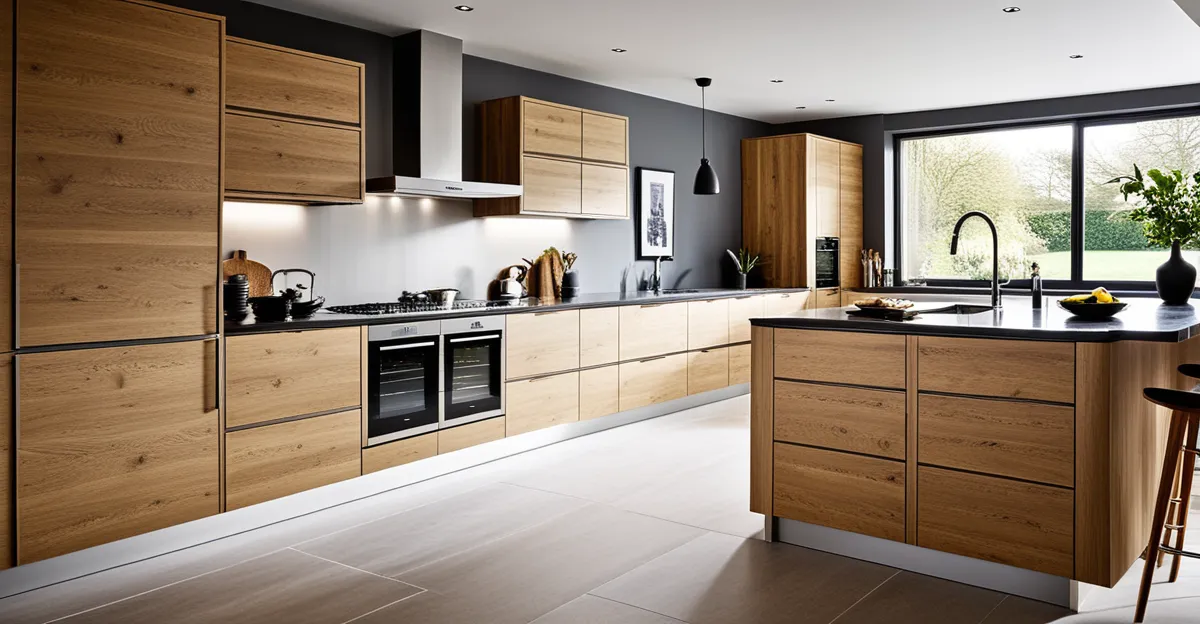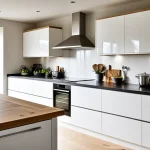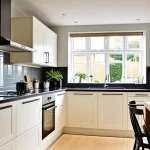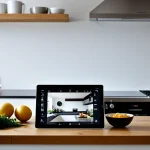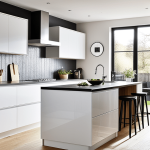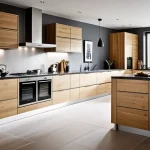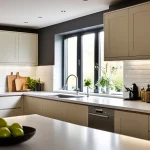Key strategies UK kitchens use to embrace personalization
UK kitchen personalization has become a defining feature in kitchen design trends, driven by homeowners’ desire to create unique, functional spaces. One prominent strategy is the integration of bespoke cabinetry tailored specifically to maximize available space and meet storage demands. Custom storage solutions are also vital, allowing kitchens to blend style with utility — think cleverly designed drawers or adjustable shelving that adapts to evolving needs.
Another key approach involves tailoring color schemes and finishes to individual tastes. Instead of generic palettes, UK kitchens now embrace personalized hues, textures, and materials that reflect the homeowner’s personality and complement the overall home decor. This customization extends beyond walls and cupboards to include countertops and backsplashes, ensuring cohesive style.
Additional reading : How do UK kitchens compare to European designs?
Lastly, combining unique layouts designed around lifestyle needs plays a crucial role. Whether accommodating large family gatherings, creating multi-functional cooking zones, or optimizing flow for smaller spaces, layouts are personalized to serve practical and aesthetic purposes. By focusing on these customization options, UK kitchen personalization not only enhances usability but also brings a sense of individuality that resonates strongly with modern design trends.
Popular personalization features in modern UK kitchens
Personalized kitchen features form the heart of UK kitchen personalization, reflecting individual style while enhancing functionality. One standout feature is the selection of statement cabinets. Homeowners often choose bespoke cabinets with unique finishes or intricate moldings, making them a focal point. These cabinet choices not only elevate aesthetics but also offer tailored storage solutions that align with specific needs.
Also to read : How is technology transforming UK kitchen experiences?
Another popular element is the incorporation of multi-functional islands and seating areas. Multi-purpose islands serve both as food preparation zones and social spaces, often equipped with integrated storage, cooktops, or seating for casual dining. This blend of practicality and style supports evolving kitchen uses, catering to family dynamics or entertaining needs.
Signature lighting and materials further define personalized kitchens. Ambient and task lighting, customized to highlight key areas, enhances usability and atmosphere. Materials such as natural stone countertops or textured backsplashes contribute to a unique tactile and visual experience. Together, these custom kitchen elements ensure each kitchen tells a distinct story that fits seamlessly into the homeowner’s lifestyle and taste.
Technological and material innovations driving customization
UK kitchen personalization increasingly relies on kitchen technology UK and innovative kitchen materials to elevate functionality and style. Smart kitchen solutions streamline cooking processes through connected appliances. For example, smart ovens with app control allow users to preheat remotely or receive alerts, enhancing convenience and precision. Similarly, sensor-activated taps and fridges with inventory tracking demonstrate how kitchen technology UK integrates seamlessly into modern homes.
Sustainability is a key focus in material choices. Homeowners favor eco-friendly, durable surfaces such as recycled quartz and bamboo composites, aligning with current kitchen design trends. These materials offer resilience and aesthetic versatility, supporting both the environment and personalization goals.
The fusion of smart appliances and cutting-edge materials results in highly tailored kitchens. For instance, combining under-cabinet LED lighting customized by voice command with antimicrobial countertop finishes creates practical yet innovative spaces. This trend reflects a broader move towards personalized kitchen elements that enhance daily usability, reflecting homeowner preferences for efficiency without sacrificing style.
Ultimately, the growing adoption of smart kitchen solutions and sustainable materials represents a dynamic shift in UK kitchen personalization, marrying advanced technology with design ingenuity.
Expert insights: UK designers and consumer preferences
Leading UK kitchen designers consistently observe that consumer demand for distinctive kitchen spaces is rapidly shaping kitchen design trends. Designers emphasize that personalization is no longer an optional luxury but a core expectation. Homeowners seek kitchens that reflect their lifestyle, priorities, and aesthetic identity, pushing the envelope on traditional layouts and finishes.
One recurring insight from designers is the growing preference for kitchen design trends that blend form and function seamlessly. This includes integrating smart storage solutions tailored to specific household needs, alongside bespoke cabinetry crafted to take advantage of every inch of space. Consumers highly value customization options that provide both practical benefits and a strong sense of individuality.
Additionally, designers note the increasing role of technology in personalization decisions. Many clients request kitchen technology UK features that optimize daily routines without compromising style. Overall, expert commentary highlights an evolution where personalization is defined by a holistic approach—careful material choices, adaptive layouts, and technology integration—to create kitchens truly unique to each home. These trends reinforce the role of UK kitchen personalization as a dynamic, client-driven process that merges innovation with timeless design principles.
Real-life case studies of personalized UK kitchens
Real UK kitchens demonstrate how UK kitchen personalization translates into practical, stylish spaces tailored to individual needs. Case studies reveal homeowners prioritizing bespoke cabinetry that maximizes limited space while reflecting personal taste. For example, one project featured a compact kitchen with integrated pull-out pantries and adjustable shelving, addressing storage challenges without sacrificing design appeal.
Many personalized kitchen examples UK showcase multi-functional areas, such as islands doubling as workstations and casual dining spots, supporting versatile lifestyles. These designs highlight how customization options enable homeowners to adapt kitchens for specific routines, whether for cooking, entertaining, or family interaction.
Learning from these projects underscores key personalization lessons. Homeowners emphasize the importance of clear communication with designers to balance aesthetics and utility. Solutions that seamlessly blend smart storage, tailored layouts, and curated finishes result in kitchens that perform well and express individuality.
These kitchen project case studies confirm that personalization is an evolving process. Challenges like budget constraints or spatial limitations are met with innovative solutions, proving that thoughtful design and customization options forge highly functional, distinctive kitchens that resonate with UK homeowners.

